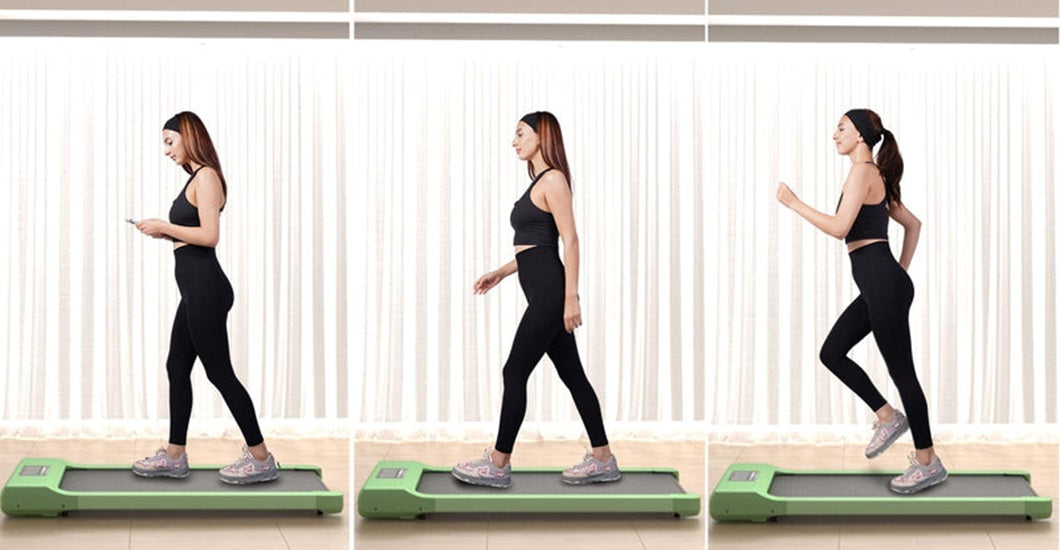In the pursuit of achieving a healthier lifestyle and shedding unwanted pounds, many individuals turn to running as a powerful and accessible means of exercise. The symbiotic relationship between running and weight loss has been widely recognized, with numerous studies highlighting the effectiveness of this aerobic activity in burning calories and improving overall fitness.
Running one mile burns around 100 calories on average.
For more details, please kindly check: How Many Calories Do You Burn Running A Mile?
Individuals should make suitable training plans for themselves. Some people like running outside, some people prefer running on a treadmill. Different people have different running routines.
Embarking on a weight loss journey requires not only dedication but also a strategic approach to goal-setting. In the realm of running, it becomes imperative to establish realistic and sustainable objectives that align with individual capabilities and lifestyles. Setting the right goals not only enhances motivation but also ensures that the weight loss process is healthy, manageable, and conducive to long-term success.
This introduction will delve into the intricacies of the interplay between running and weight loss, emphasizing the significance of approaching this fitness endeavor with a balanced and achievable mindset.
All About Weight Loss
Caloric Deficit and Its Role in Weight Loss
Achieving weight loss fundamentally revolves around the concept of a caloric deficit - the state in which the body expends more calories than it consumes.
Caloric deficit simply means eating fewer calories than burning.
This fundamental principle is the cornerstone of successful weight management, making it essential to understand the role of a caloric deficit in fostering a healthier body weight. By comprehending how the energy balance equation operates, individuals can tailor their dietary and exercise habits to create a sustainable and effective pathway toward weight loss.
Factors Influencing the Number of Calories Burned During Running
- Intensity and Duration of Running
The effectiveness of running as a tool for weight loss is intricately linked to the intensity and duration of the activity.
High-intensity running, such as interval training, can elevate the metabolic rate, promoting calorie burn not only during the workout but also in the post-exercise recovery period.
Meanwhile, the duration of running contributes to the total energy expenditure, influencing the overall caloric deficit.
Striking a balance between intensity and duration is crucial in optimizing the weight loss benefits of running.
- Individual Factors (Age, Weight, Fitness Level)
The number of calories burned during running varies among individuals due to inherent factors such as age, weight, and fitness level.
Younger individuals may experience a different metabolic response compared to their older counterparts, and body weight serves as a determinant in calorie expenditure.
Furthermore, an individual's fitness level plays a pivotal role, with more conditioned athletes often burning calories more efficiently.
Recognizing these individual differences is essential in tailoring running routines to specific needs, ensuring a personalized approach to weight loss that accommodates diverse physiological factors.

Running in Weight Loss
Cardiovascular Benefits of Running
Running offers a myriad of cardiovascular benefits that extend beyond the realm of weight loss. Engaging in regular running activities enhances cardiovascular health by promoting stronger heart function, improved blood circulation, and increased lung capacity. These physiological adaptations contribute to a more efficient cardiovascular system, reducing the risk of heart-related diseases. As an integral component of a weight loss strategy, the cardiovascular benefits of running synergistically support overall well-being while aiding in the pursuit of a healthier body weight.
Comparison of Different Running Intensities (Steady-State vs. Interval Training)
- Steady-State Running:
Steady-state running involves maintaining a consistent pace throughout the exercise. This moderate-intensity approach promotes sustained calorie burn and aerobic conditioning. While it may be suitable for longer durations, its effectiveness in elevating post-exercise metabolism can be different compared to higher-intensity alternatives.
- Interval Training:
Interval training alternates between short bursts of high-intensity running and periods of lower-intensity recovery or rest. This dynamic approach has been shown to increase calorie expenditure, improve metabolic rate, and enhance cardiovascular fitness. The post-exercise calorie burn associated with interval training can contribute significantly to a caloric deficit, making it a valuable strategy in weight loss efforts.
Comparing these running intensities allows individuals to tailor their exercise routines based on personal preferences, fitness levels, and specific weight loss goals.
Incorporating Running into a Comprehensive Fitness Plan
Running, when integrated into a comprehensive fitness plan, becomes a potent tool for weight loss and overall health. No matter whether you like running outside or running on a treadmill. By complementing running with strength training, flexibility exercises, and other forms of physical activity, individuals create a well-rounded approach to fitness.
This synergy not only enhances weight loss efforts but also promotes muscle development, joint health, and overall functional fitness. A holistic fitness plan ensures that running becomes a sustainable and enjoyable component of a balanced lifestyle, fostering long-term success in weight management.

Simulate a Running Plan On a Treadmill To Lose Weight
Here's a simulated running plan on a treadmill for weight loss. Remember to adapt the plan based on your fitness level, preferences, and any pre-existing health conditions. Before starting any new exercise routine, it's advisable to consult with a healthcare professional or fitness expert.
Week 1-2: Establishing a Routine
- Day 1-3:
- Warm-up: 5 minutes of brisk walking
- Run: 1 mile at a comfortable pace
- Cool down: 5 minutes of brisk walking
- Day 4-5:
- Day 6-7:
- Warm-up: 5 minutes of brisk walking
- Run: 1.5 miles at a comfortable pace
- Cool down: 5 minutes of brisk walking
Week 3-4: Building Endurance
- Day 1-3:
- Warm-up: 5 minutes of brisk walking
- Run: 2 miles at a comfortable pace
- Cool down: 5 minutes of brisk walking
- Day 4-5:
- Day 6-7:
- Warm-up: 5 minutes of brisk walking
- Run: 2.5 miles at a comfortable pace
- Cool down: 5 minutes of brisk walking
Week 5-6: Introducing Intervals
- Day 1-3:
- Warm-up: 5 minutes of brisk walking
- Interval Run: 1 mile (alternate between 1 minute of high intensity and 2 minutes of moderate-intensity)
- Cool down: 5 minutes of brisk walking
- Day 4-5:
- Day 6-7:
- Warm-up: 5 minutes of brisk walking
- Interval Run: 2 miles (alternate between 1 minute of high intensity and 2 minutes of moderate-intensity)
- Cool down: 5 minutes of brisk walking
Week 7-8: Increasing Intensity
- Day 1-3:
- Warm-up: 5 minutes of brisk walking
- Run: 3 miles at a moderate to challenging pace
- Cool down: 5 minutes of brisk walking
- Day 4-5:
- Day 6-7:
- Warm-up: 5 minutes of brisk walking
- Run: 3.5 miles at a moderate to challenging pace
- Cool down: 5 minutes of brisk walking
Adjust the plan based on your progress and how your body responds. Listen to your body, stay hydrated, and pay attention to any signs of discomfort. As you advance, consider incorporating strength training and maintaining a balanced diet for optimal weight loss results.
Conclusion
Ultimately, the key lies not just in the number of miles run but in the commitment to a balanced and sustainable lifestyle that incorporates running as one component of a comprehensive approach to weight loss and improved health. Set a suitable running plan and healthy diet plan is a good way to help lose weight.












Leave a comment
All comments are moderated before being published.
This site is protected by reCAPTCHA and the Google Privacy Policy and Terms of Service apply.